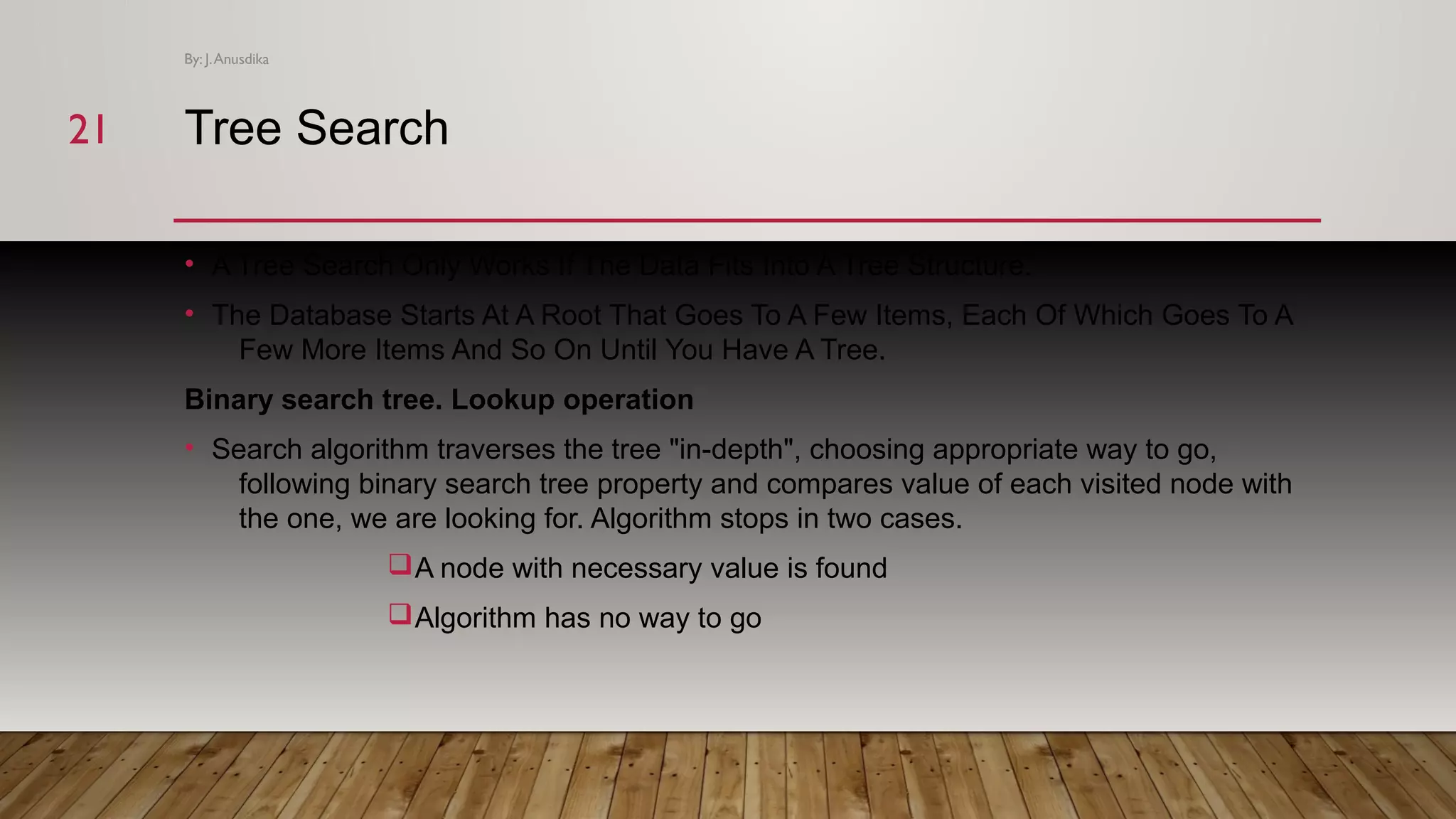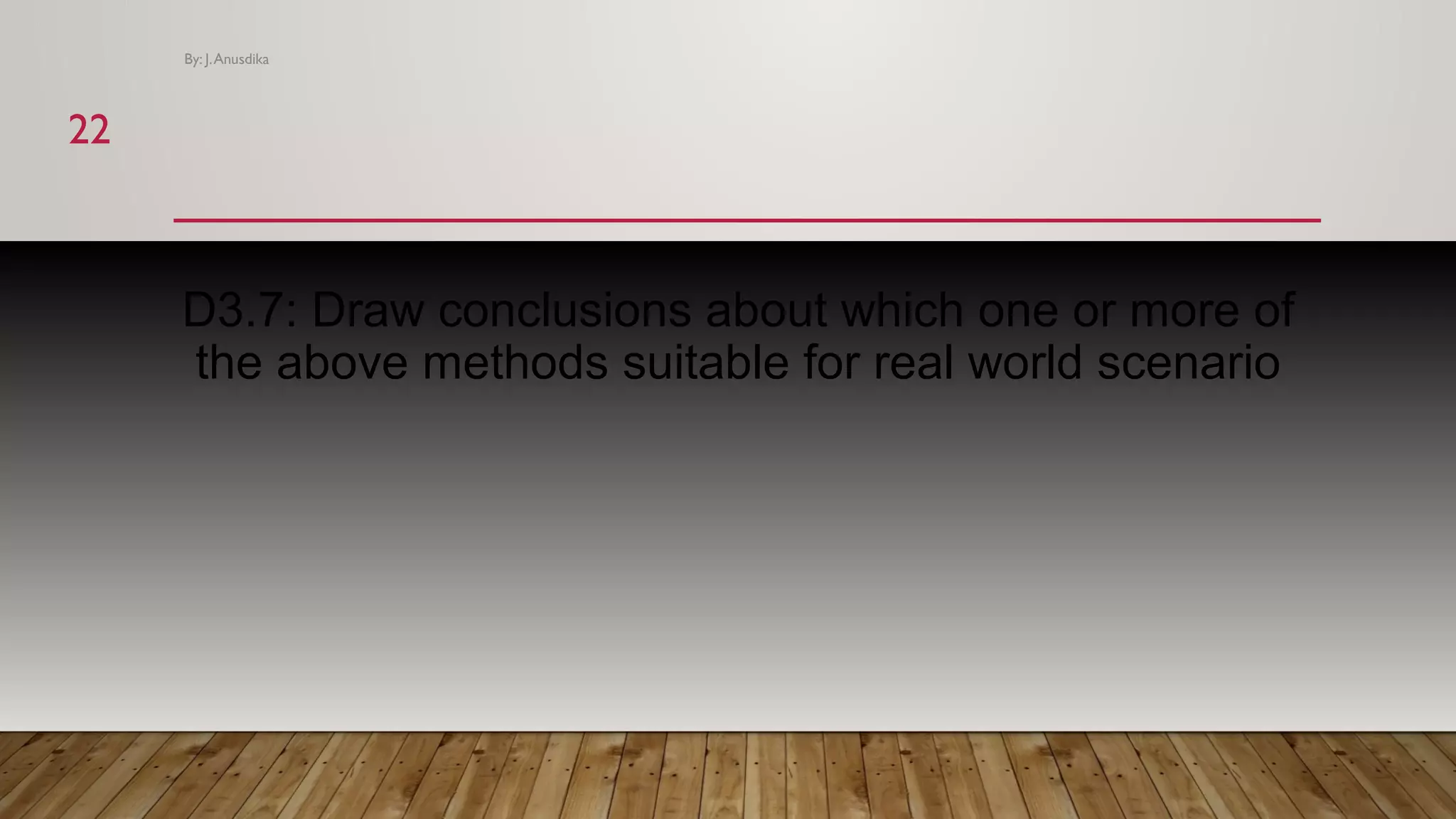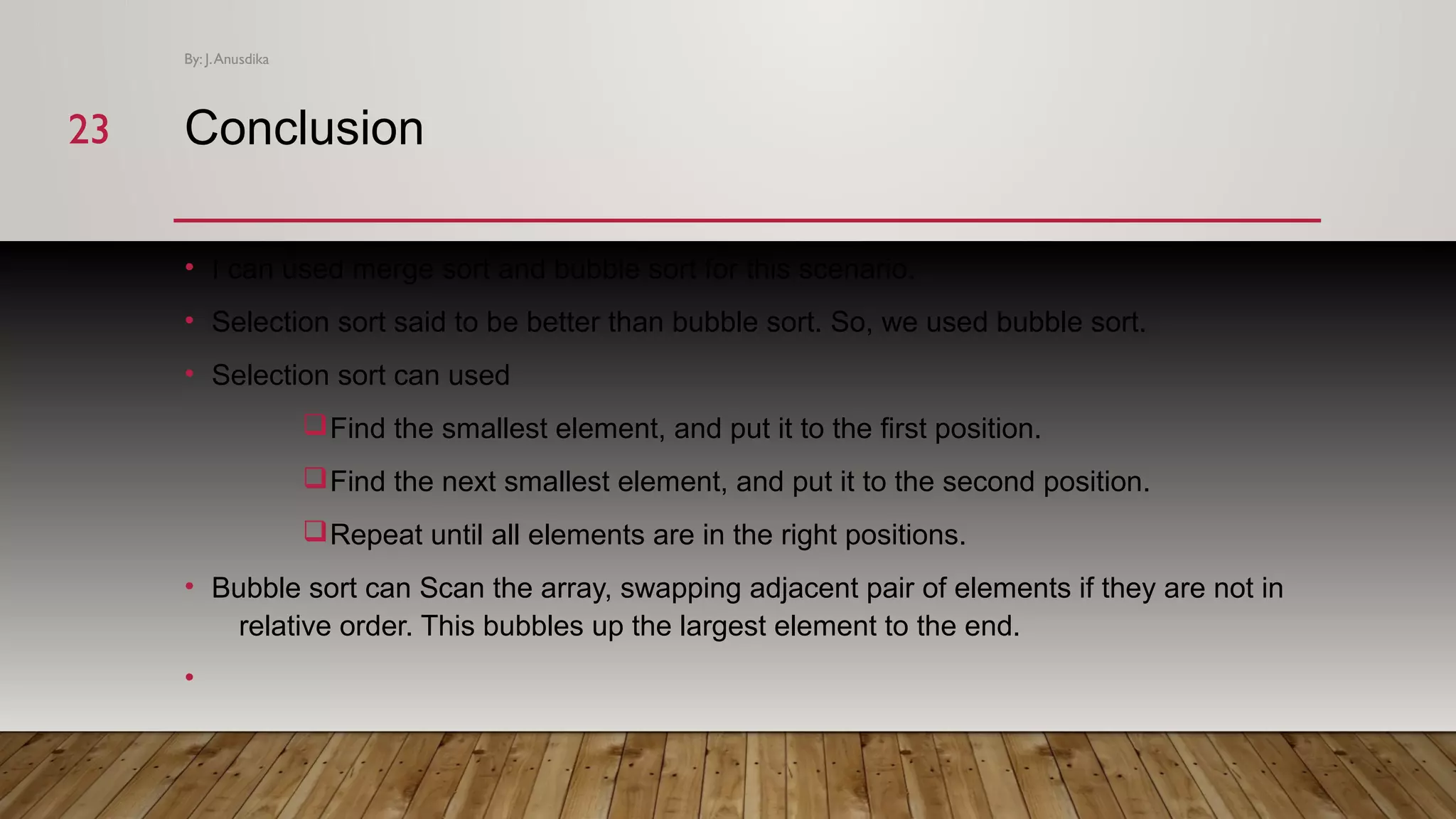This document discusses and compares various sorting and searching algorithms. It begins with an introduction to algorithm analysis and complexity measures like time and space complexity. It then defines sorting as arranging data in a particular order and searching as finding a particular element. Common sorting algorithms described include bubble sort, insertion sort, bucket sort, selection sort, heap sort, and merge sort. Searching algorithms covered are linear search and binary search. The document provides examples and pseudocode to explain how each algorithm works. It concludes that merge sort and bubble sort would be suitable for real-world scenarios based on their properties.
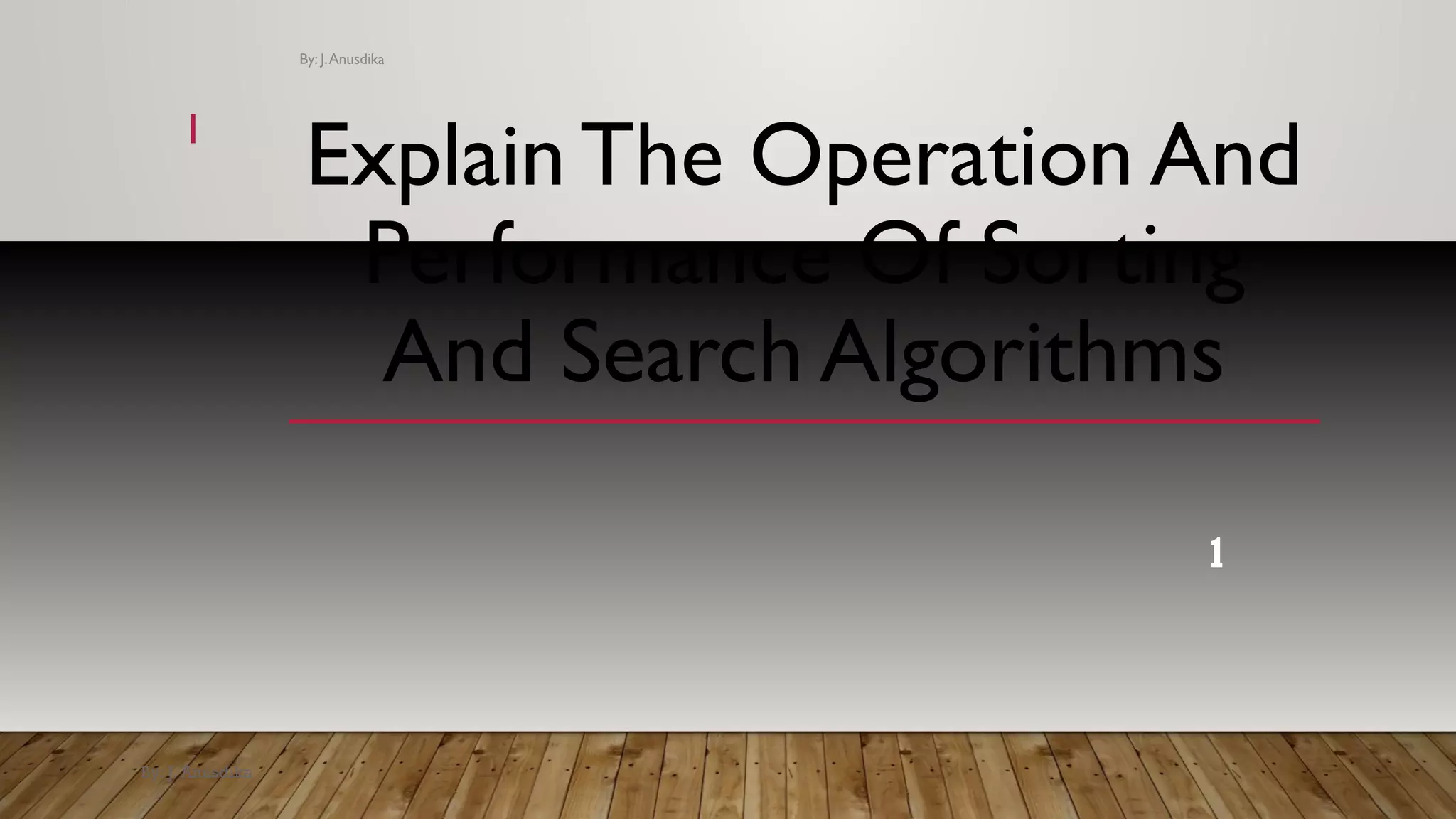
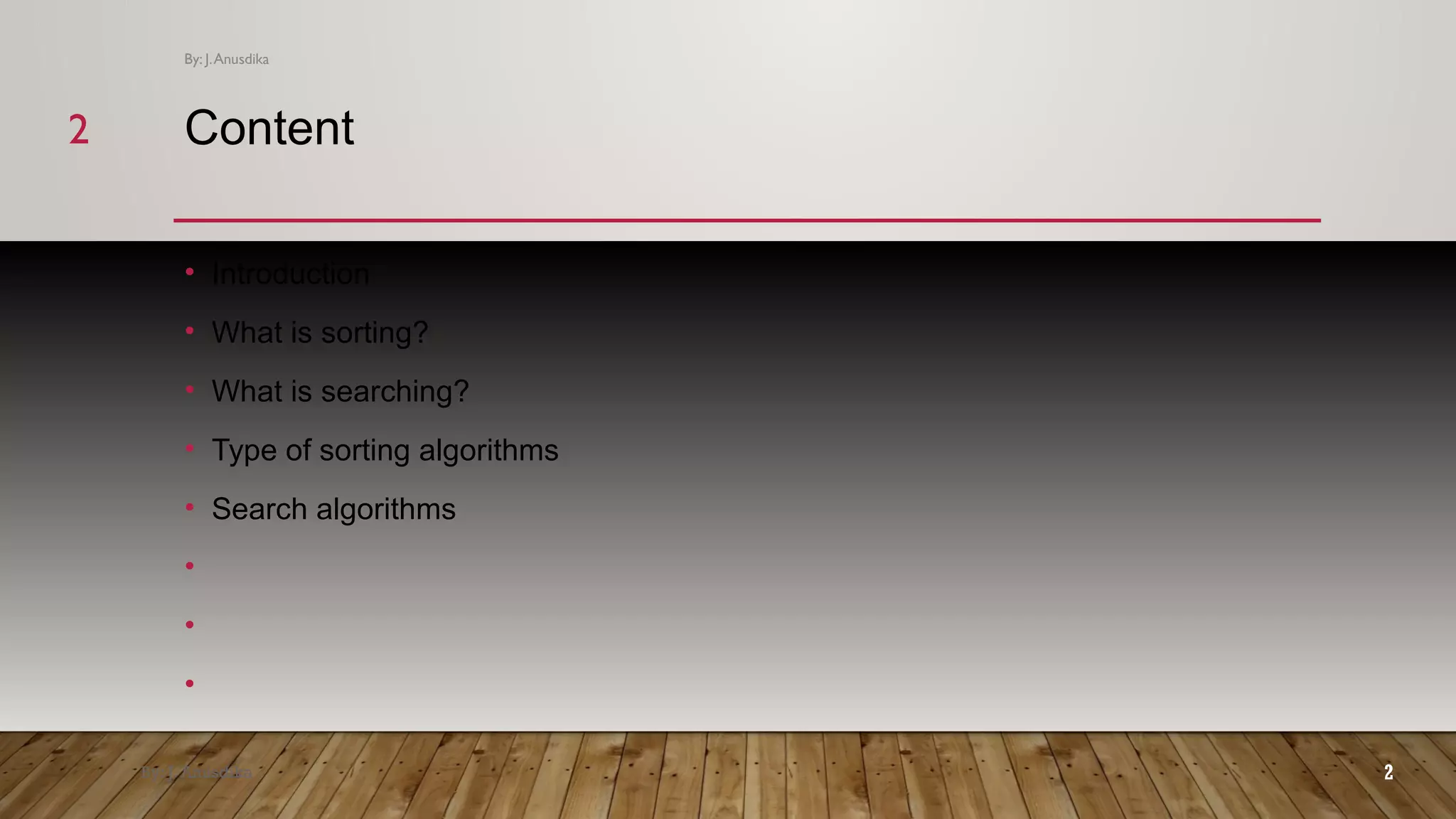
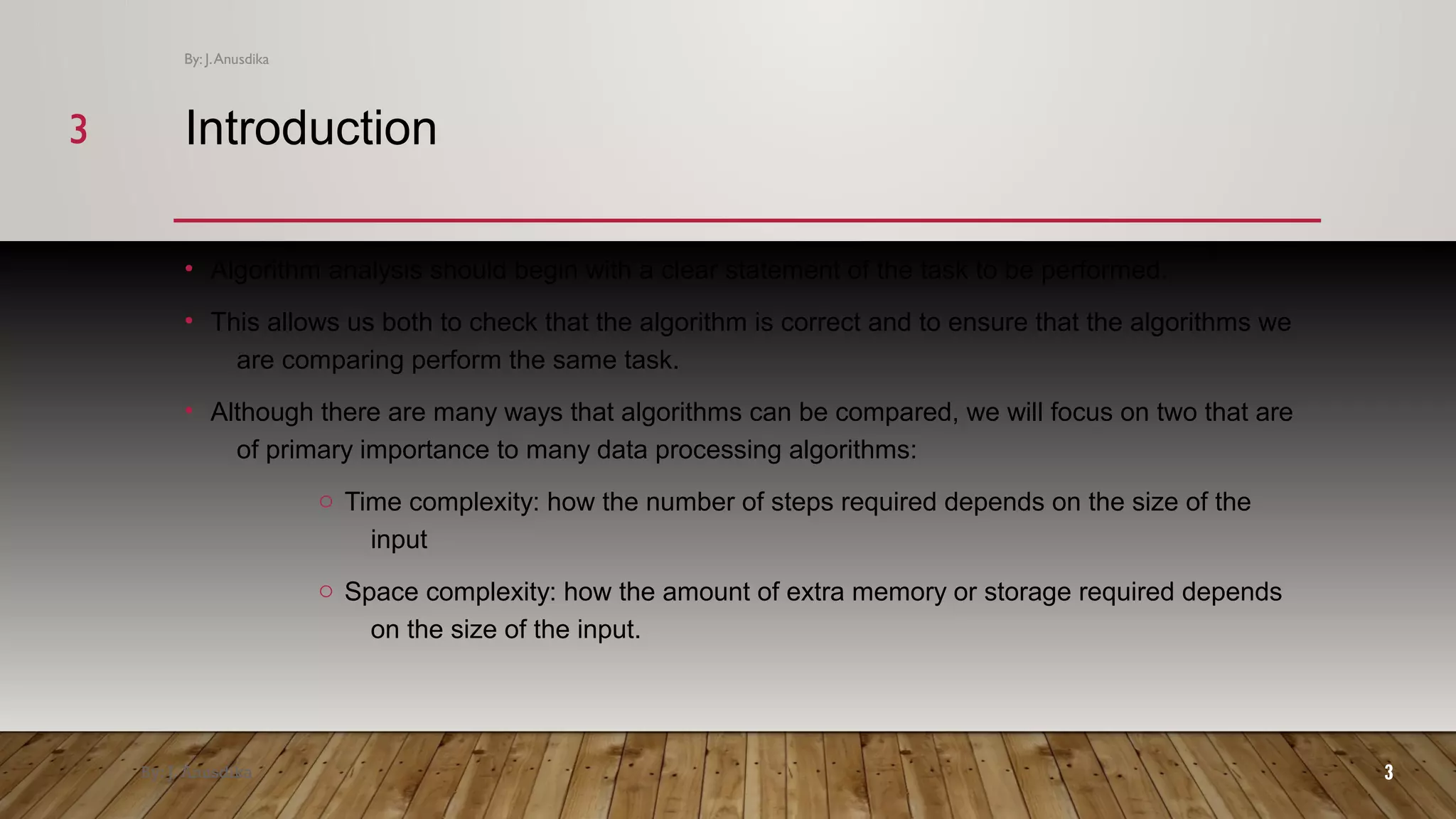
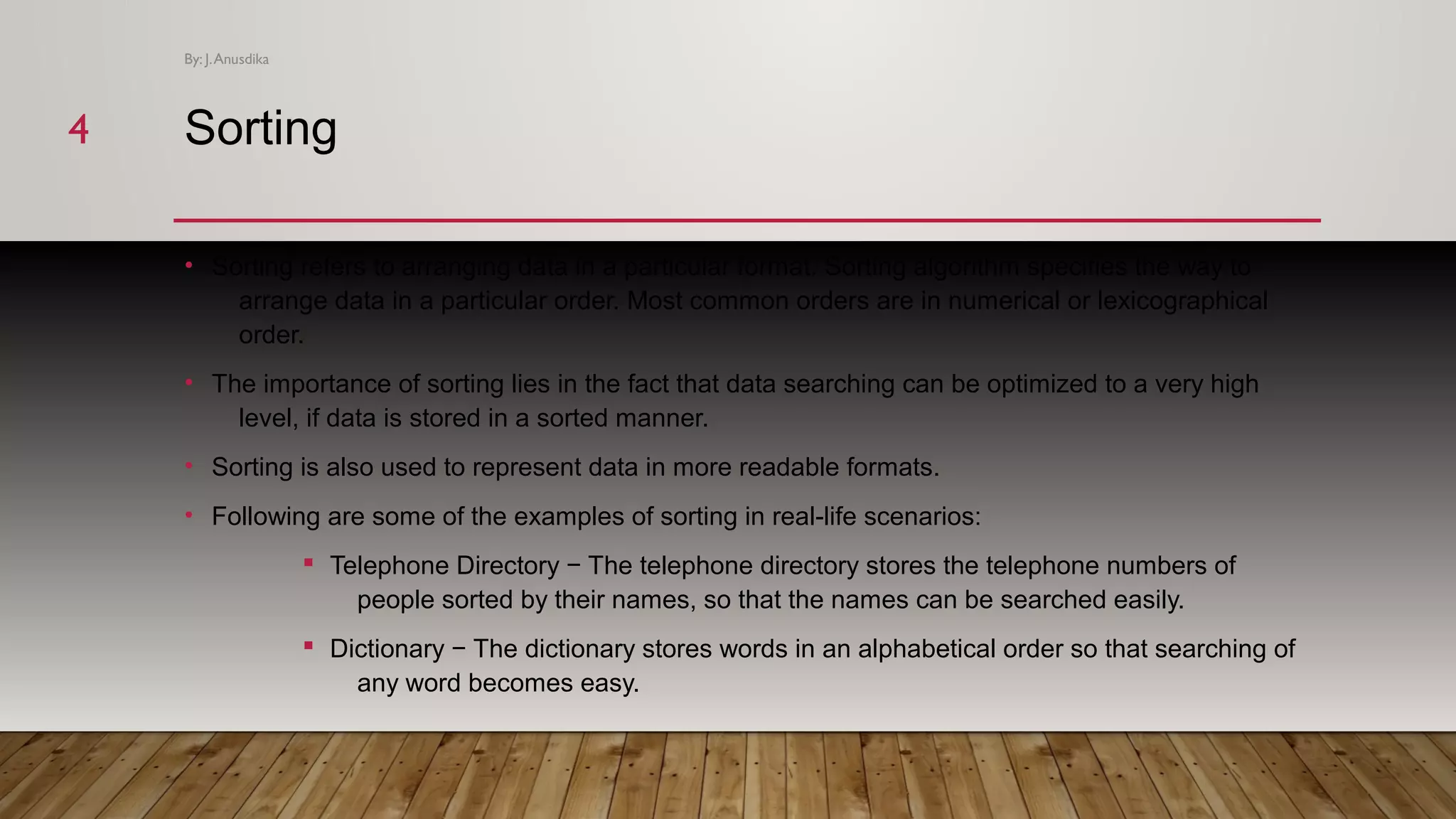
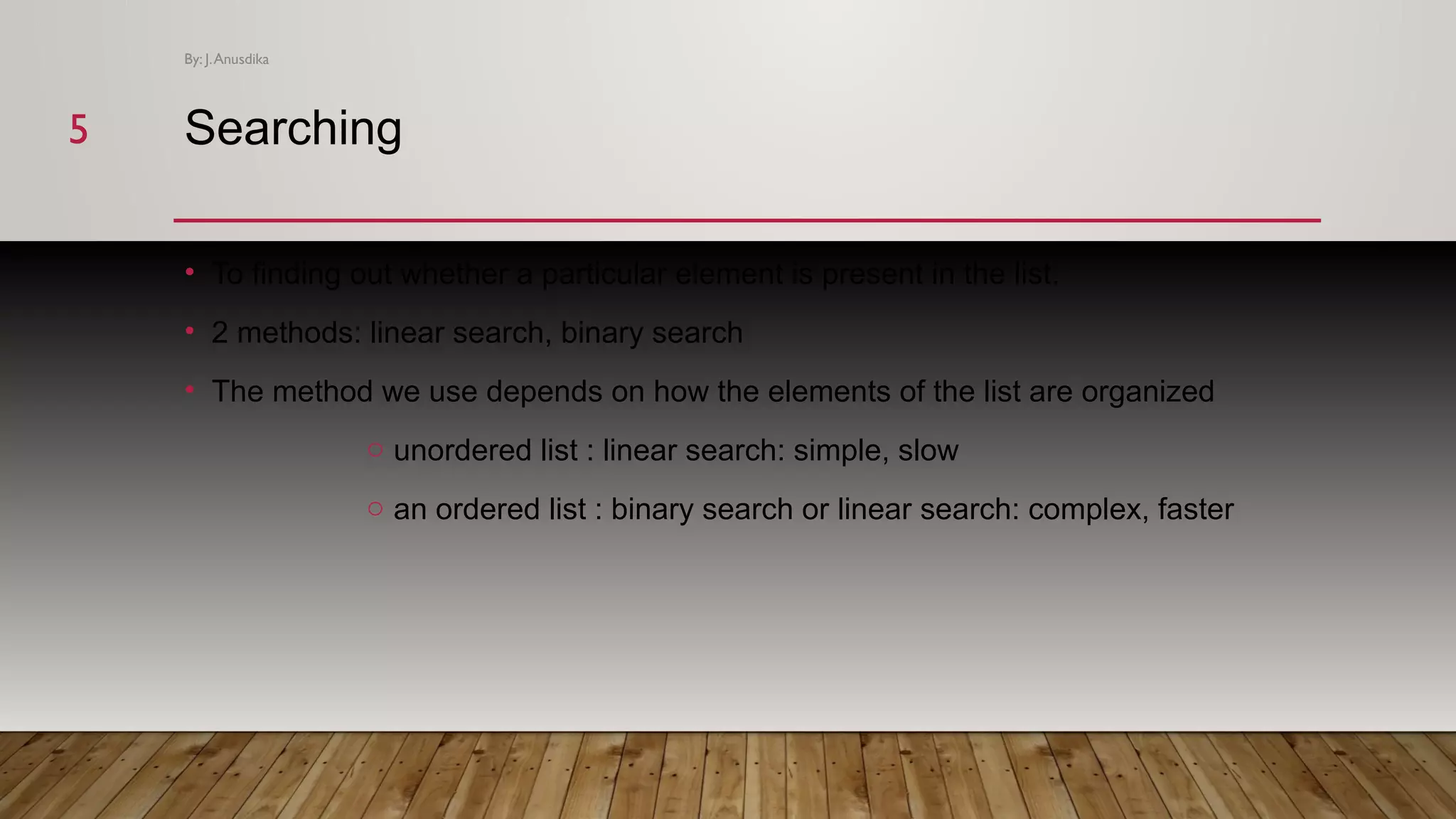


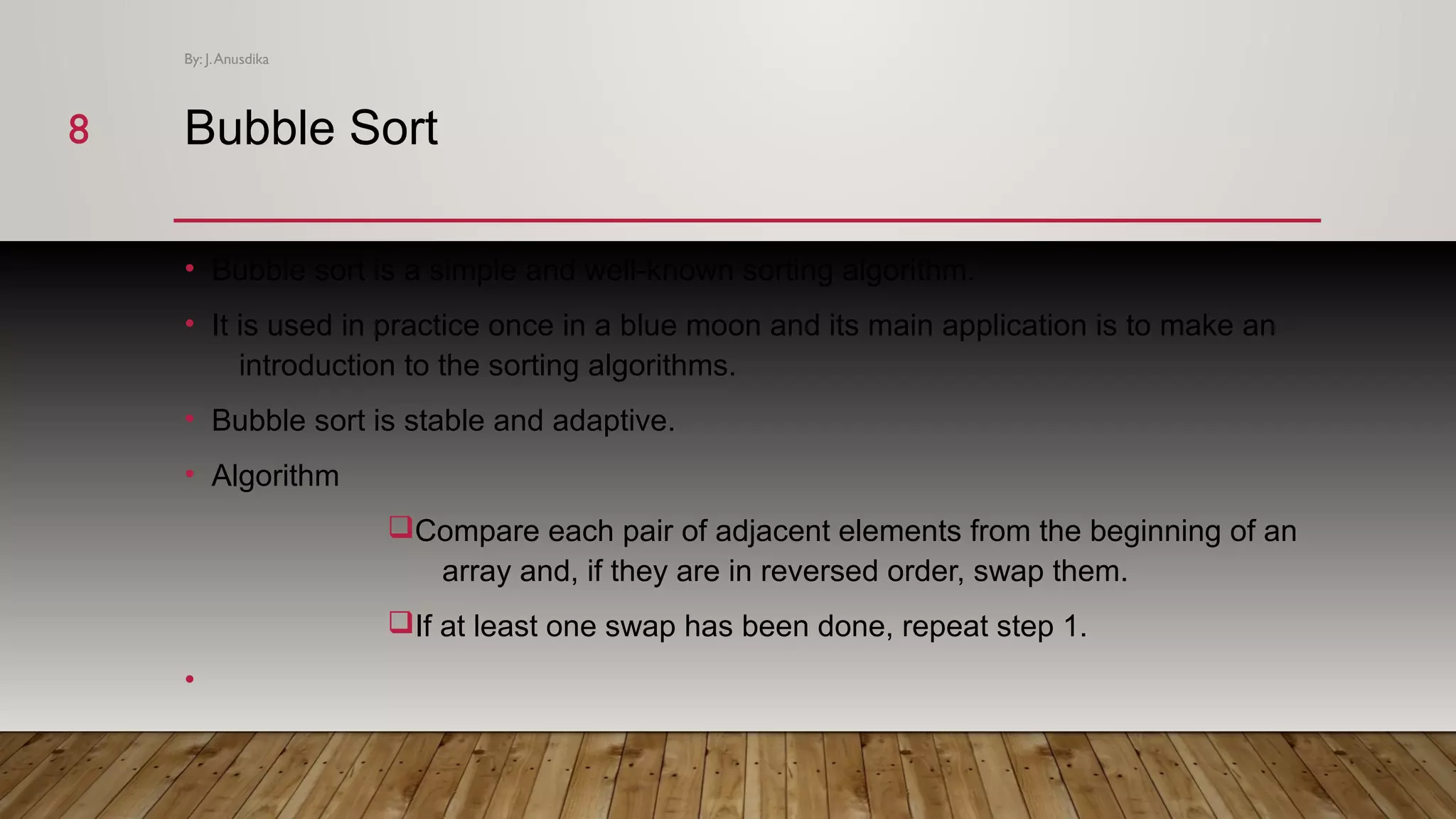
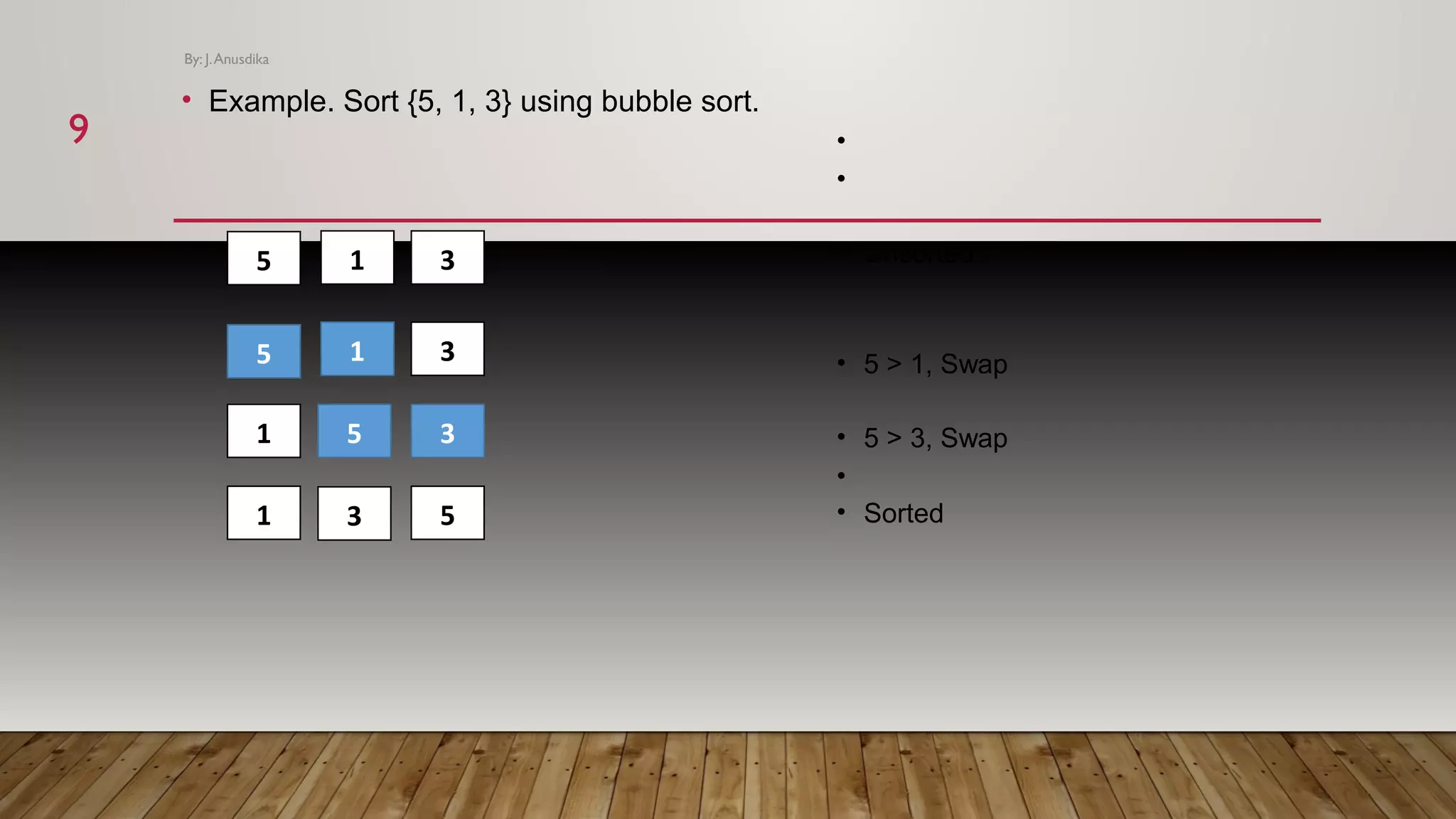
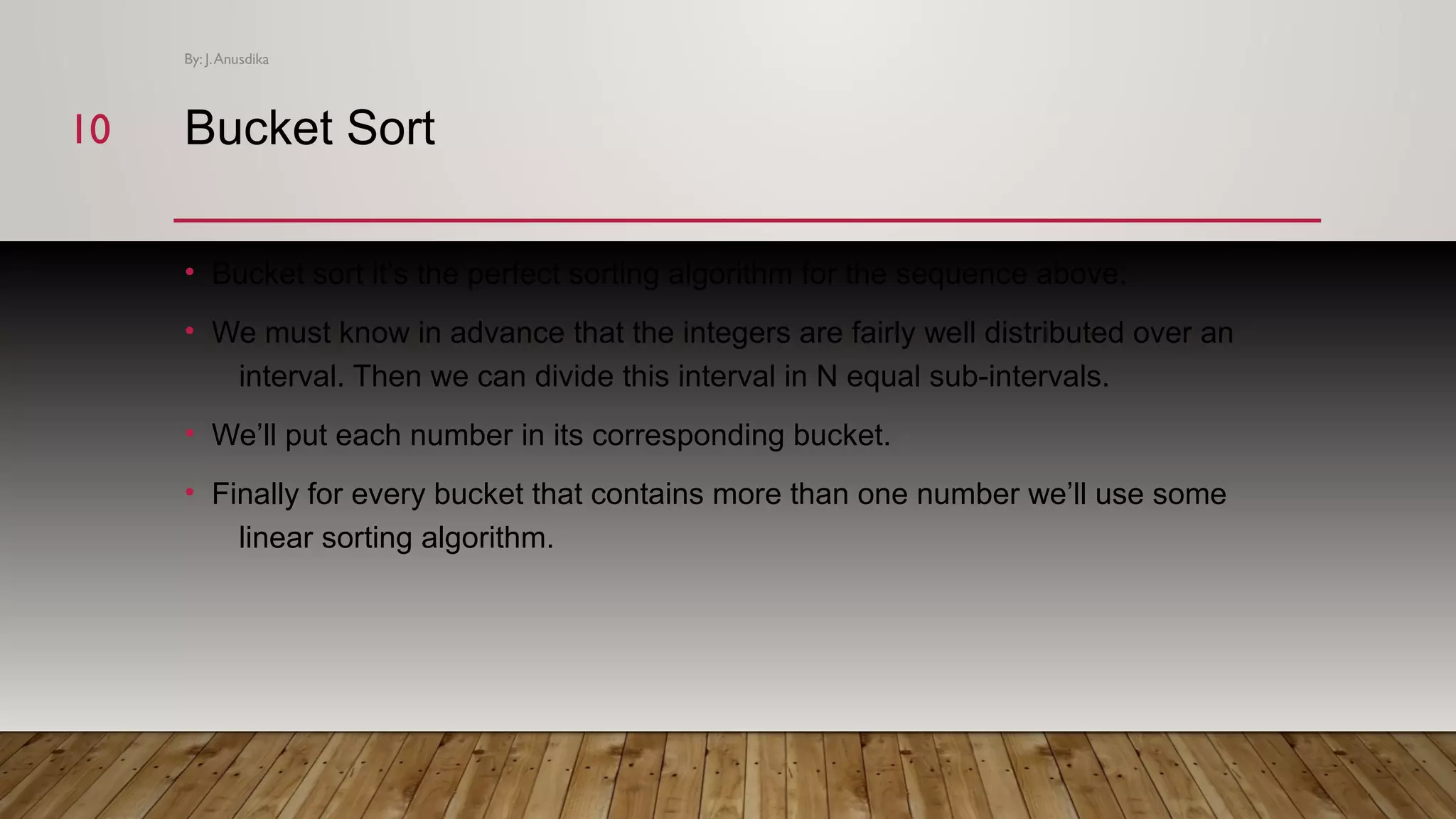
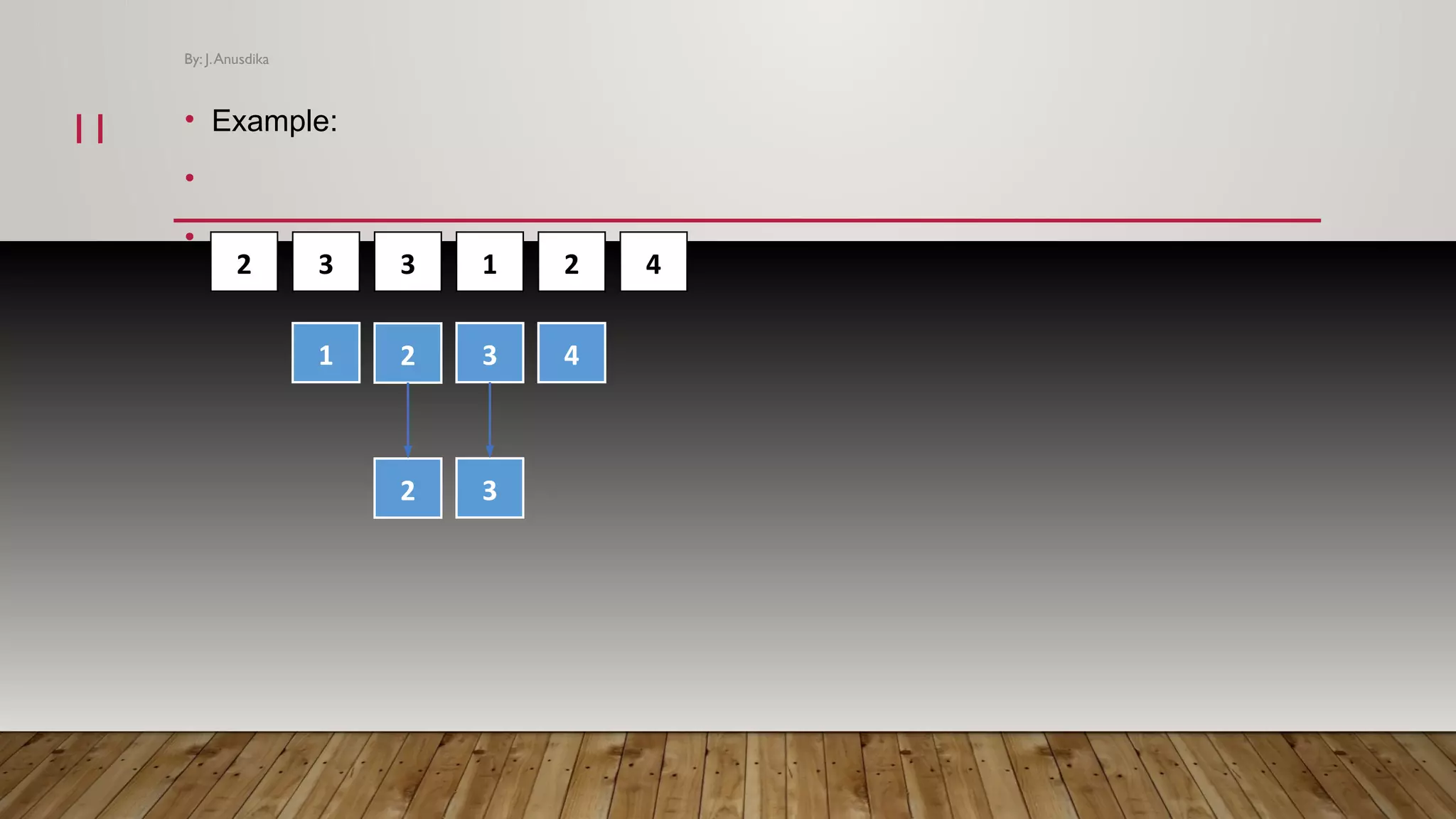
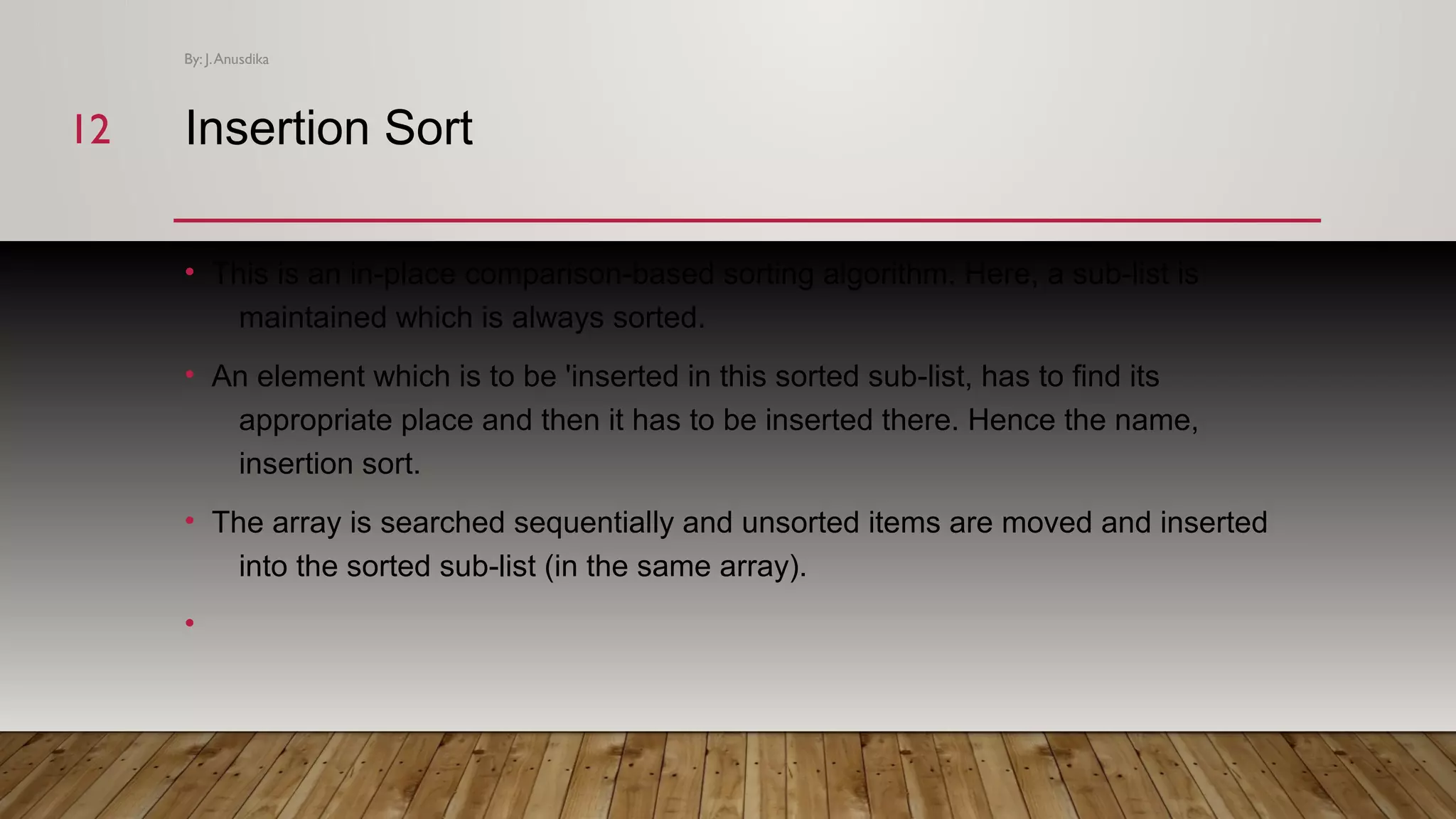
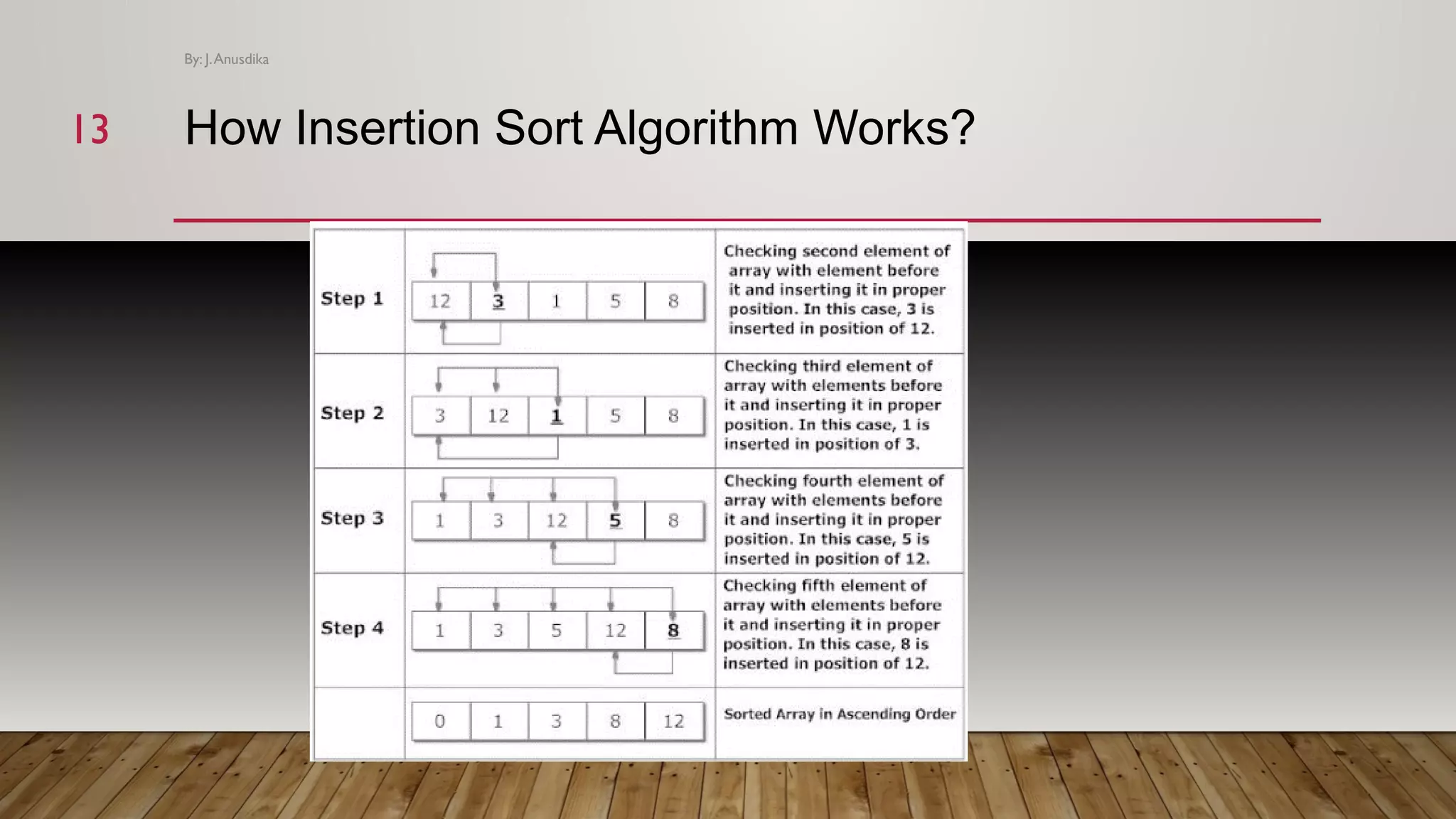
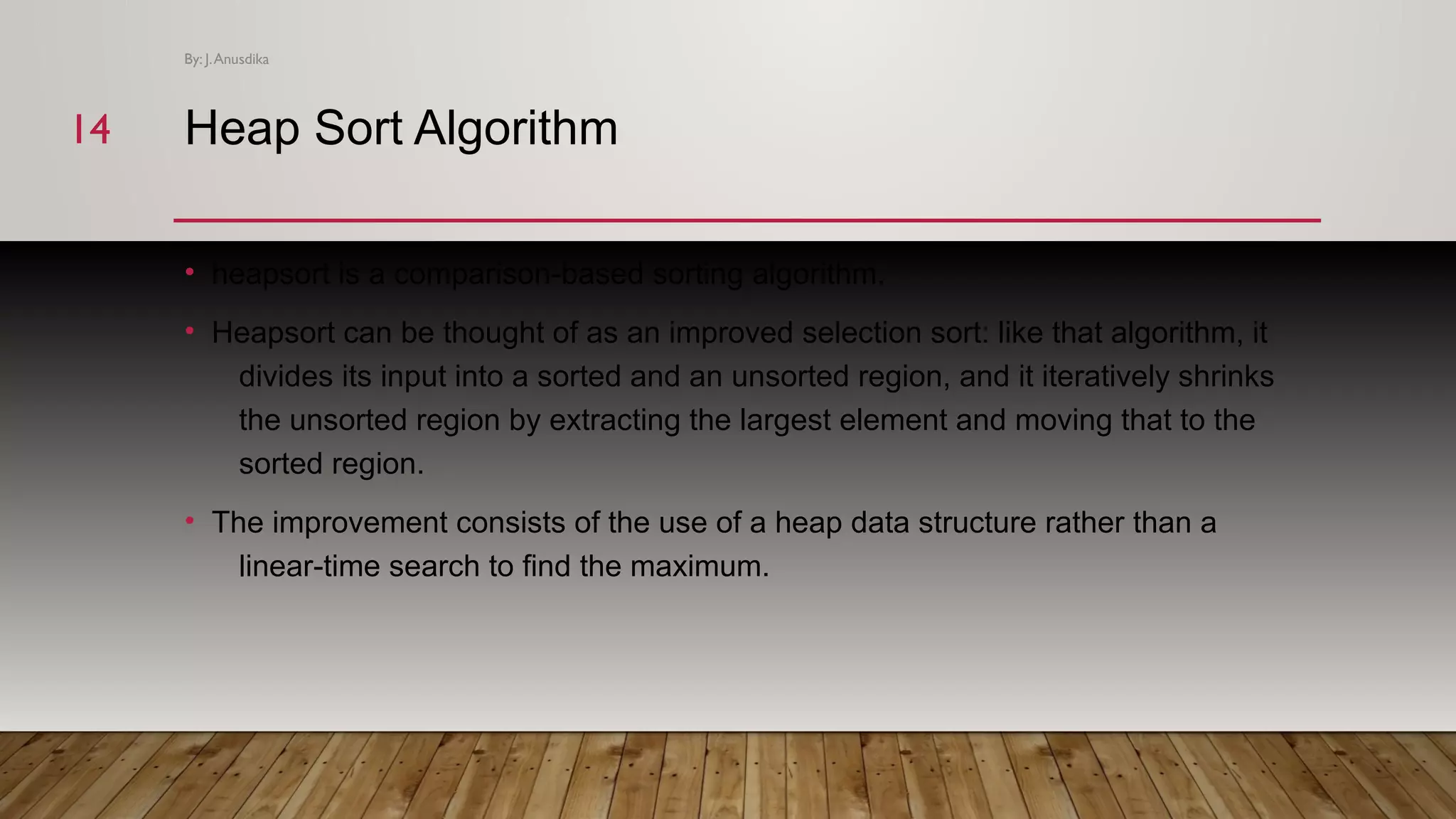
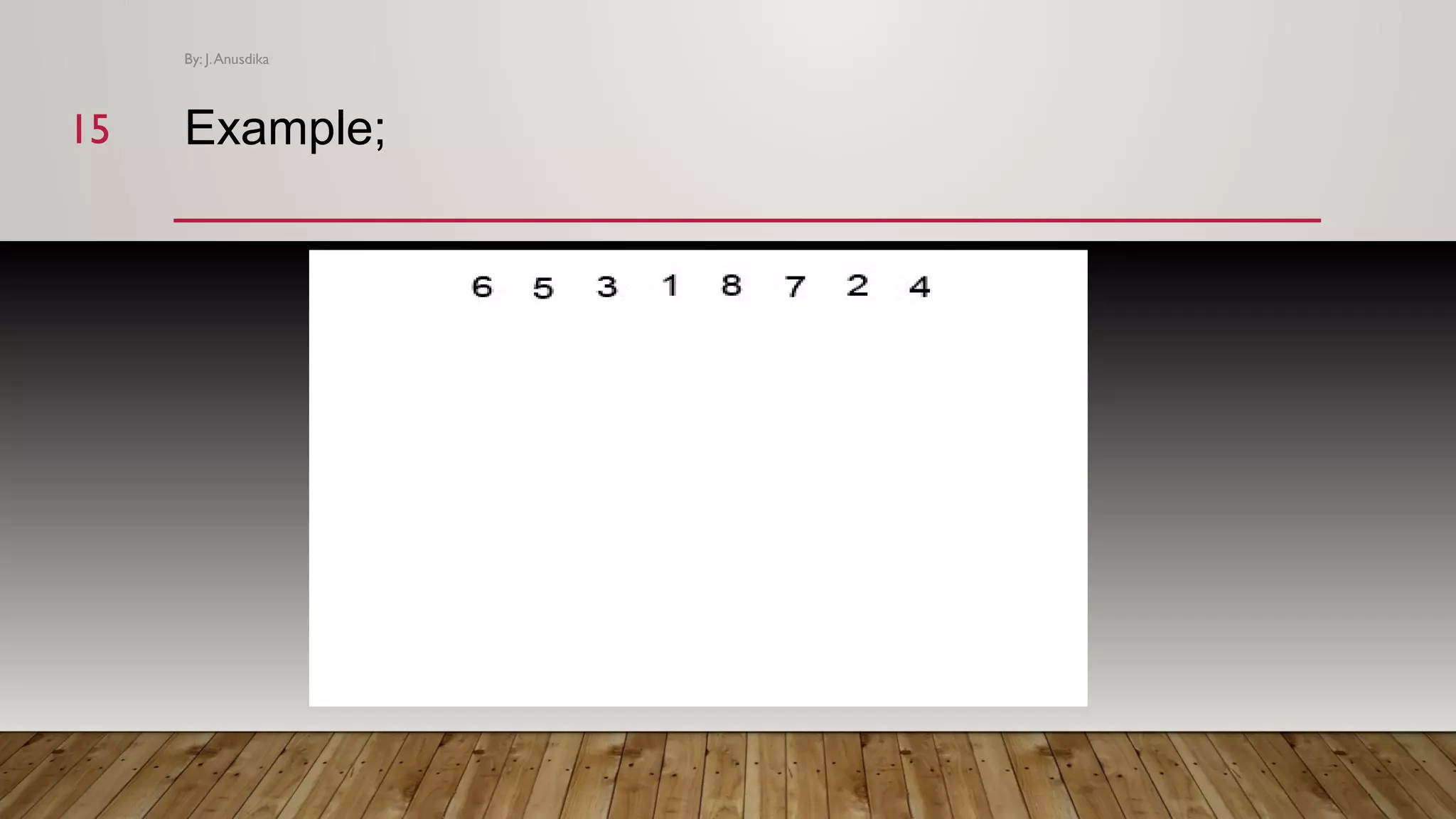

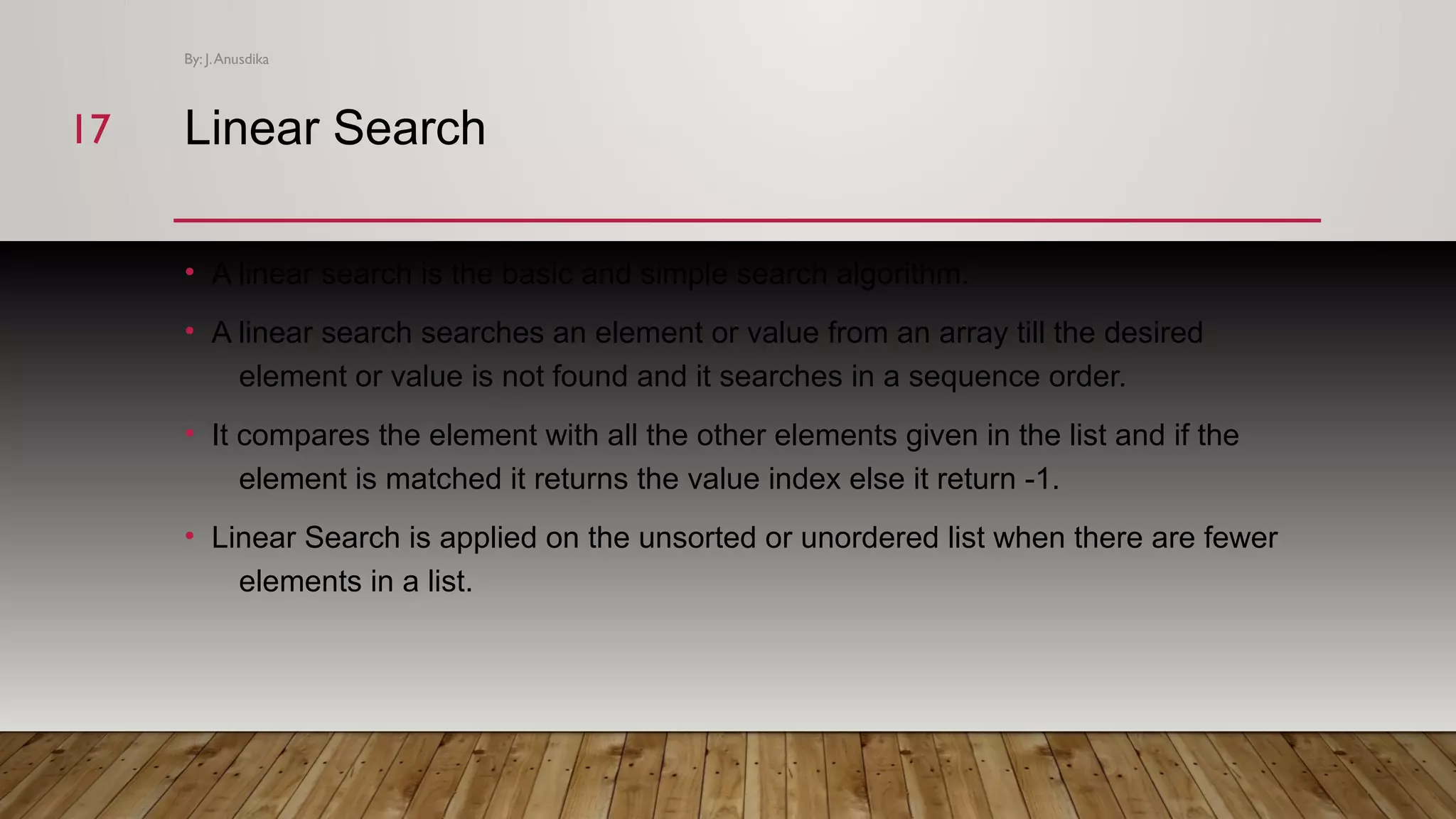
![Example; Algorithms Linear Search ( Array A, Value x) Step 1: Set i to 1 Step 2: if i > n then go to step 7 Step 3: if A[i] = x then go to step 6 Step 4: Set i to i + 1 Step 5: Go to Step 2 Step 6: Print Element x Found at index i and go to step 8 Step 7: Print element not found Step 8: Exit By: J.Anusdika 1818](https://image.slidesharecdn.com/dsa1-170424185937/75/Data-operatons-searching-and-sorting-algorithms-18-2048.jpg)
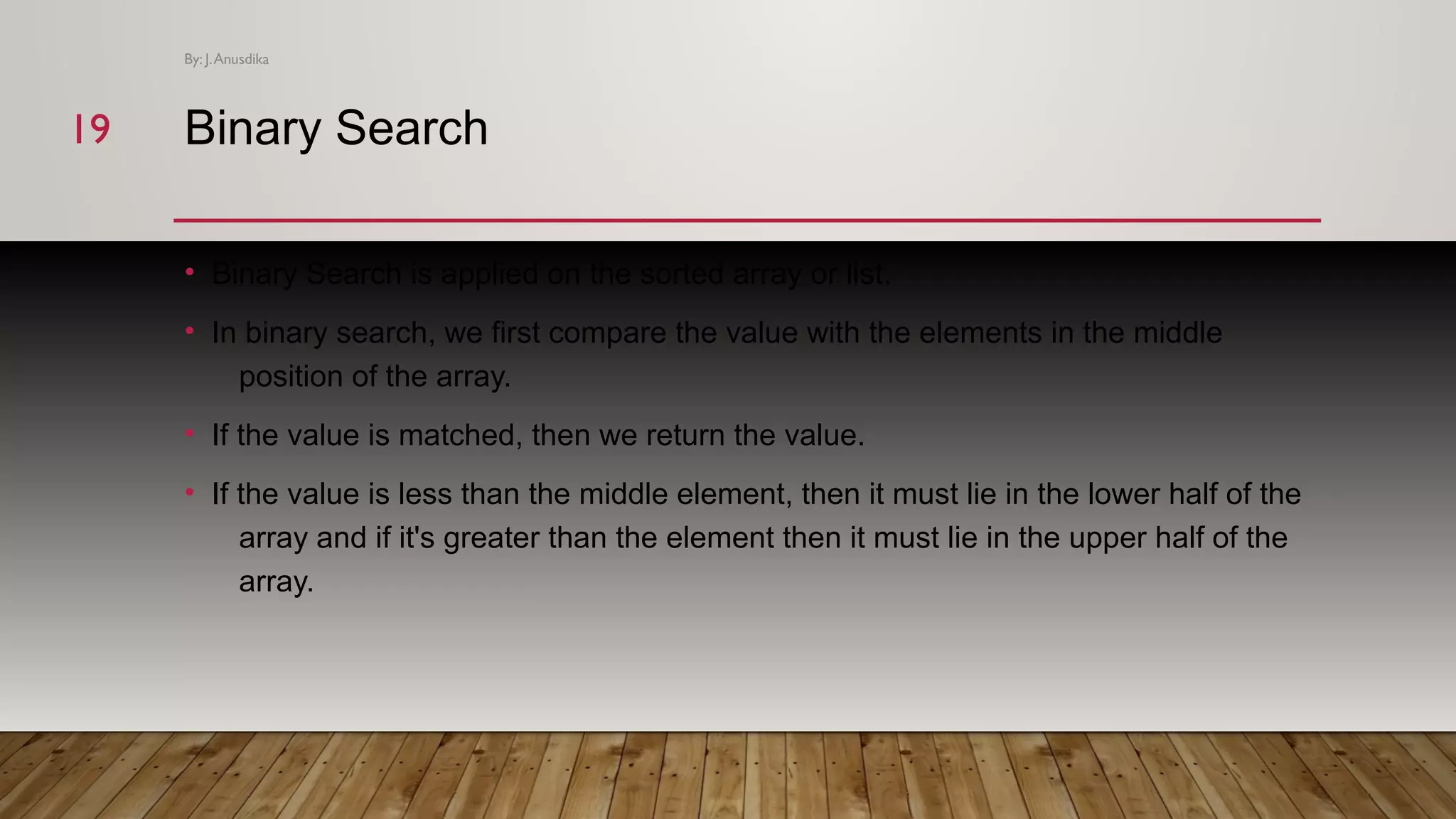
![Example With Implementation • To search an element 9 from the sorted array or list. • Code • function findIndex(values, target) { return binarySearch(values, target, 0, values.length - 1); }; function binarySearch(values, target, start, end) { if (start > end) { return -1; } var middle = Math.floor((start + end) / 2) , var value = values[middle]; if (value > target) { return binarySearch(values, target, start, middle-1); } if (value < target) { return binarySearch(values, target, middle+1, end); } return middle; //found! } findIndex([2, 4, 7, 9, 13, 15], 9); • By: J.Anusdika 2020](https://image.slidesharecdn.com/dsa1-170424185937/75/Data-operatons-searching-and-sorting-algorithms-20-2048.jpg)
